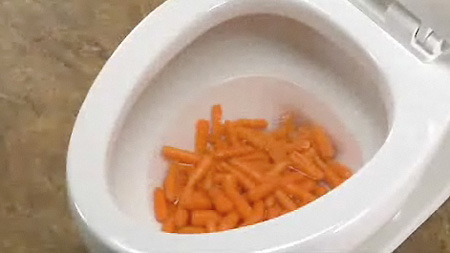Is it Allowed to Flush Food Down the Toilet?
Is it Allowed to Flush Food Down the Toilet?
Blog Article
Just about every person will have their own individual way of thinking about Flushing Food Down the Toilet?.

Intro
Lots of people are usually confronted with the problem of what to do with food waste, specifically when it comes to leftovers or scraps. One typical inquiry that develops is whether it's okay to purge food down the bathroom. In this write-up, we'll delve into the reasons that individuals might consider flushing food, the effects of doing so, and alternate approaches for appropriate disposal.
Reasons people could think about flushing food
Lack of recognition
Some people may not know the potential injury caused by purging food down the bathroom. They may incorrectly think that it's a safe practice.
Benefit
Purging food down the toilet may feel like a quick and easy remedy to throwing away undesirable scraps, specifically when there's no neighboring garbage can available.
Idleness
Sometimes, people may merely choose to flush food out of large idleness, without thinking about the consequences of their actions.
Consequences of flushing food down the commode
Ecological impact
Food waste that ends up in waterways can add to contamination and injury marine ecological communities. Additionally, the water used to purge food can stress water resources.
Plumbing issues
Purging food can bring about clogged pipelines and drains, triggering costly pipes fixings and hassles.
Kinds of food that must not be purged
Fibrous foods
Foods with coarse appearances such as celery or corn husks can obtain entangled in pipelines and create blockages.
Starchy foods
Starchy foods like pasta and rice can absorb water and swell, leading to blockages in pipelines.
Oils and fats
Greasy foods like bacon or cooking oils must never ever be flushed down the toilet as they can strengthen and cause blockages.
Appropriate disposal methods for food waste
Utilizing a garbage disposal
For homes outfitted with waste disposal unit, food scraps can be ground up and flushed through the pipes system. However, not all foods are suitable for disposal in this manner.
Recycling
Certain food packaging materials can be recycled, reducing waste and decreasing ecological influence.
Composting
Composting is an eco-friendly means to throw away food waste. Organic materials can be composted and used to enrich dirt for horticulture.
The importance of appropriate waste monitoring
Lowering environmental injury
Correct waste monitoring methods, such as composting and recycling, assistance decrease pollution and protect natural deposits for future generations.
Safeguarding pipes systems
By staying clear of the practice of flushing food down the commode, homeowners can prevent costly pipes repair services and maintain the honesty of their pipes systems.
Conclusion
To conclude, while it might be alluring to flush food down the commode for convenience, it is necessary to comprehend the possible effects of this activity. By taking on proper waste monitoring practices and disposing of food waste properly, people can contribute to much healthier pipes systems and a cleaner environment for all.
FLUSH FOOD DOWN THE TOILET?
FLUSHING FOOD CAN CAUSE BLOCKED DRAINS IN YOUR HOME
All of the plumbing fixtures in your home are connected to the same sewer pipe outside of your home. This outdoor sewer pipe is responsible for transporting all the wastewater from your home to the Council sewer mains. Even small pieces of food that go down the kitchen sink can cause problems for your sewer. It should therefore be obvious that flushing larger bits of food, such as meat, risks a clog in either the toilet itself or the sewer pipes. Flushing greasy food is even more problematic because oil coagulates when it cools, coating the interior lining of your pipes.
THE TOILET IS NOT A BIN
Food isn’t the only thing that people shouldn’t be flushing down the toilet. People use the toilet to dispose of all kinds of things such as tampons, makeup wipes, dental floss, kitty litter and even underwear. Water goes to great lengths to educate residents about the high costs and stress placed on wastewater treatment systems simply from people flushing the wrong stuff down the toilet. It costs taxpayers millions of dollars each year, and homeowners thousands in blocked drain repairs.
FLUSHING FOOD IS A WASTE OF WATER
Flushing food is a waste of our most precious resource - water. In June this year Level 1 water restrictions were introduced to protect water supply from drought conditions. Much of New South Wales continues to be affected by prolonged drought with recent figures revealing up to 97 per cent of the state remains in drought. Depending on whether you have a single or dual flush toilet, every single flush uses between five and 11 litres of water. In the current climate this is a huge amount of water to be wasting on flushing food that should be placed in the bin (or better yet, the compost).
https://www.jabplumbingsolutions.com.au/blog/can-you-flush-food-down-the-toilet

As a passionate reader on What Can Happen If You Flush Food Down the Toilet?, I was thinking sharing that piece of content was really helpful. Those who liked our page if you please don't forget to pass it around. I enjoy reading our article about Think Twice Before Flushing Food Down Your Toilet.
Call Today Report this page